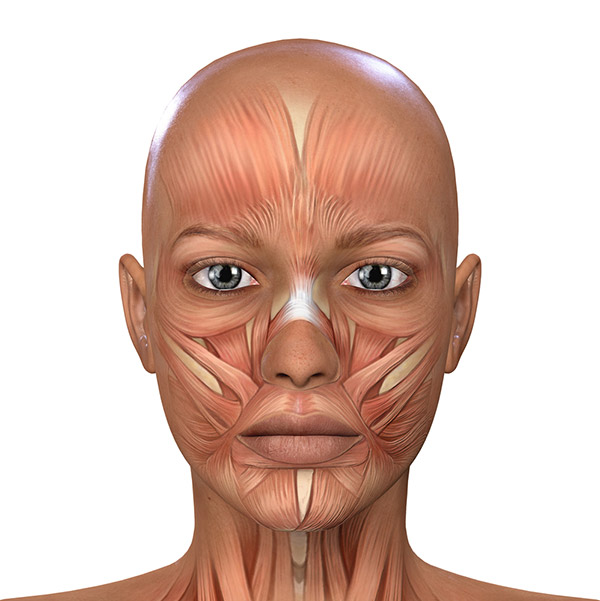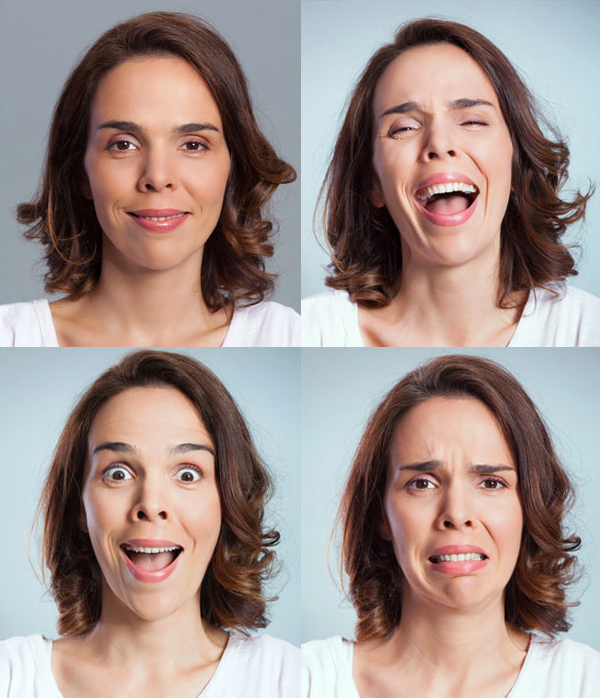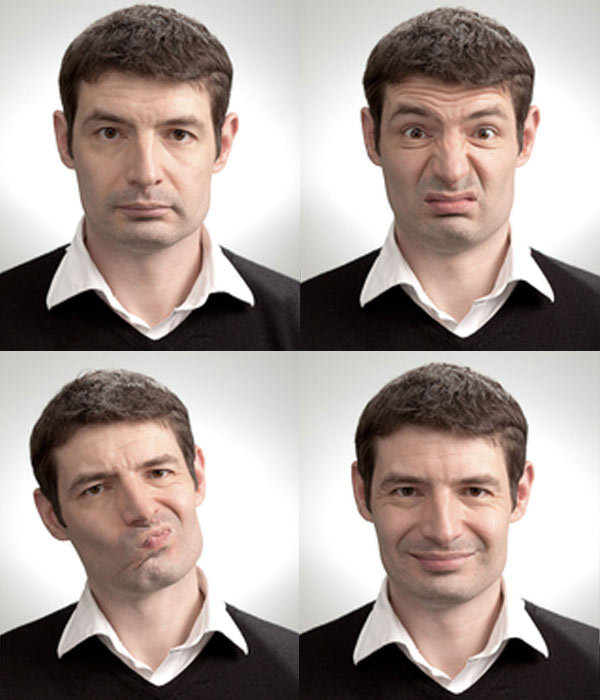Facial Dynamics
Our face and facial expressions are a key part of our personality and individuality.Dynamic and passive expression
Our faces are complex anatomical structures made up of bone, overlayed with fine muscles, fat compartments, nerves, and connective tissue. These permit dynamic movement such as blinking, smiling and speaking and the many facial expressions that give character to our faces, convey emotion and contribute to the subtle nuance of communication.
Dynamic (active) expression
Facial expression is the result of the delicate balance of muscles interacting together to form the appropriate expression. However, as we age certain muscles, often those termed ‘lifters’, weaken due to deflation of the underlying fat pads or bone. Equally, the opposing ‘depressor’ muscles can become too strong and this can create a negative emotional appearance – a good example of this is a down-turned ‘sad’ mouth.
Over time, the underlying structures of the bone and deeper fat pads change thanks to gravity and the ageing process. Unbalanced facial movement can generate expressions that may unconsciously transmit negative messages,
Passive (resting) expression
Similarly, unfavourable passive or resting expressions may give out negative messages that are not always reflected by true feelings. We can appear sad, angry, tired or old and often feel it misrepresents our true self.
How this affects your face and the ageing process
- Pronounced frown and forehead lines can give an anxious or angry appearance.
- A heavy brow can give your face a depressed or grumpy expression.
- Down-turned sad mouth – when the muscles draw down on the corner of the mouth – can leave you looking permanently miserable even when you’re perfectly content.
- Drooping brows, eye hollows or bags create a tired appearance.
- Looking older than your years – the effect of muscles overworking and pulling downwards can create that ‘drawn’ expression that betrays your age.
Restoring the balance – lift, relax and brighten your outlook
If you feel that the ageing process is affecting your facial expressions and demeanour we can help. The balance of muscle movement can be addressed with the skilled application of Botox® muscle-relaxing injections and dermal fillers to ‘modulate’ the muscle movement.
Dermal fillers soften lines and replenish volume to depleted fat pads, whilst specific muscles can be relaxed to restore the face to a brighter and more contented looking you. And you’ll very likely lose some sagging and wrinkles along the way!
Dr Norup is highly experienced in this area and renowned for her use of muscle modulators to achieve excellent, natural-looking results.
1. Facial anatomy pubmed.ncbi.nlm.nih.gov/15158538
2. The interactions between botulinum-toxin-based facial treatments and embodied emotions Scientific Reports
A reassuringly professional, personal and effective service
The Norup Clinic offers a bespoke service, by appointment only, at our Clinic in Esher, Surrey.
BOOK YOUR CONSULTATION


